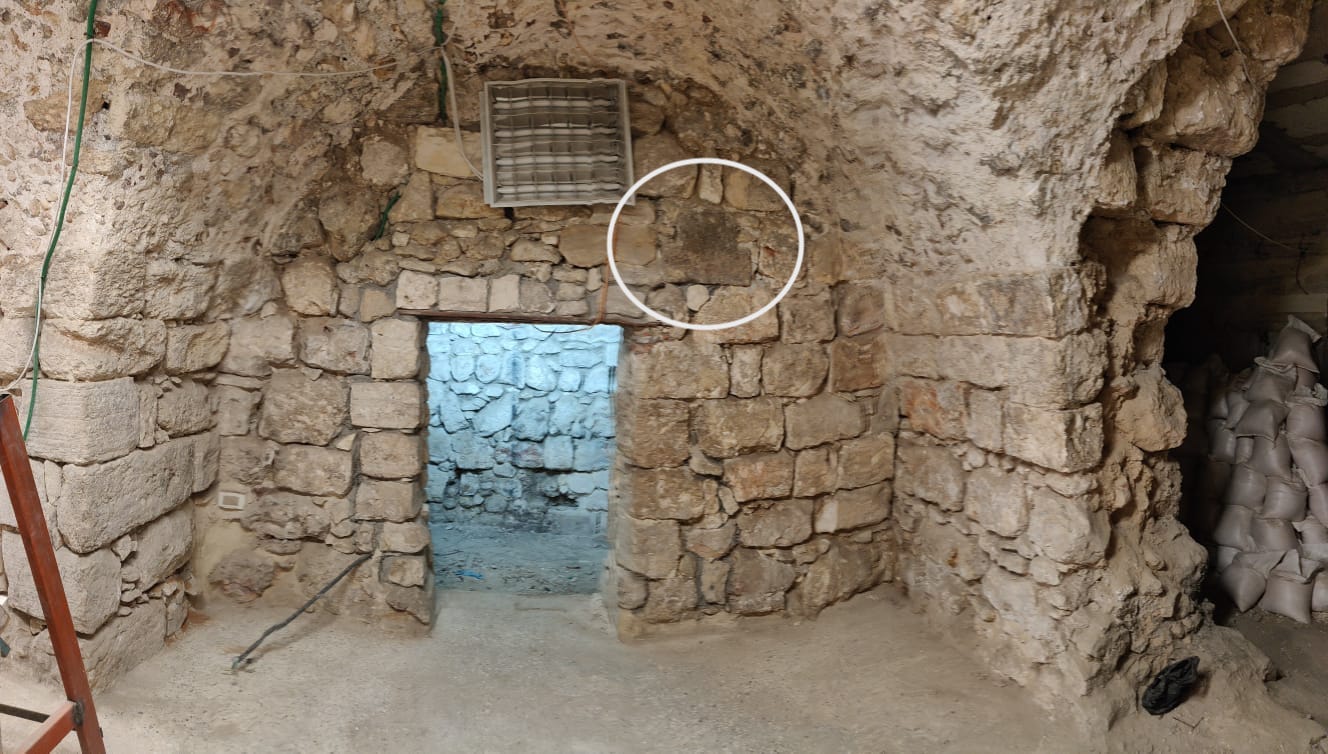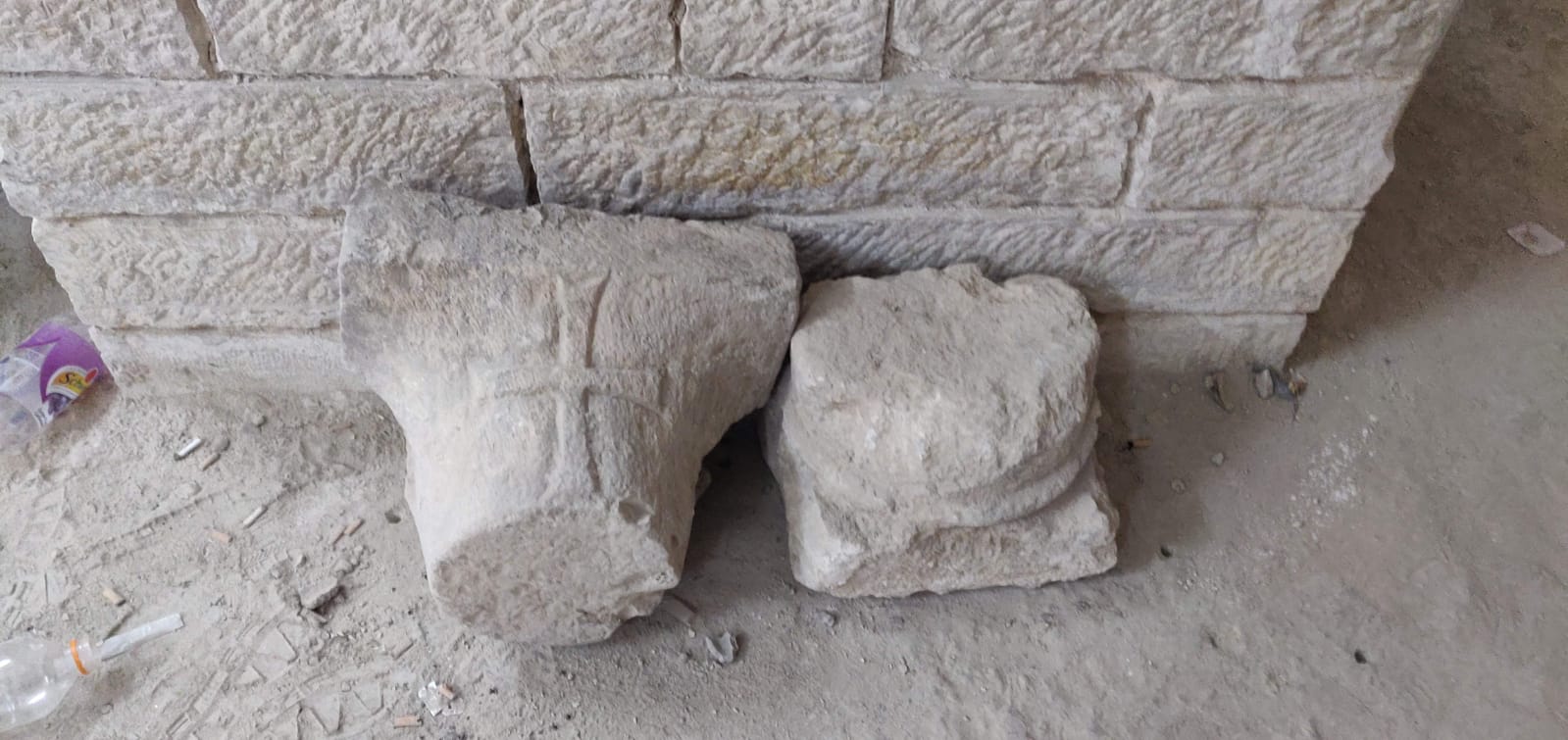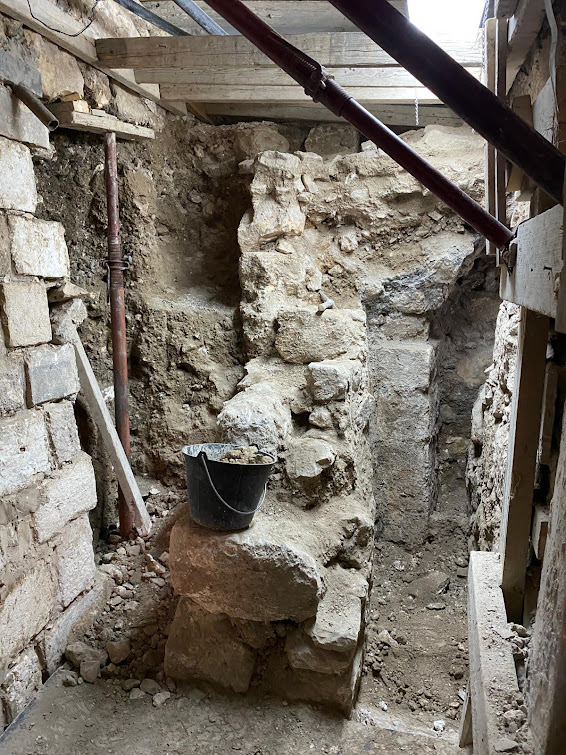The building site of the Terra Sancta Museum : Georgian and Crusader remains under the Franciscan church
As the work on the new historical section of the Terra Sancta Museum continues, the architects responsible for the site were very surprised to discover, under the present-day Franciscan church, a Georgian capital, a base of a column and a Crusader wall!
About fifty years ago, what will become the future room of the museum consecrated to the work of mother-of-pearl was the convent’s library, which has since been moved to another part of the complex. At the time, work had been done to reinforce the walls, forcing the present-day architects to make major changes, even at times removing and rebuilding come walls, such as the one at the entrance of this room.
It was then that the Georgian capital and the column base were discovered, previously used in the partition to consolidate it. In the same room, another great surprise was awaiting the workers and the rest of the team: a part of a Crusader wall was brought to the light of day! The three artefacts were immediately studied by Friar Eugenio Alliata ofm, director of the archaeological and multimedia section of the Terra Sancta Museum. The identification of the capital proved to be relatively simple thanks to the presence on one of its sides of a cross pattée, typical of the Georgian style. Moreover, the object has a slit revealing that it was probably part of an iconostasis, the partition separating the celebrating clergy from the rest of the assembly in the Byzantine liturgy. The attribution of the wall is subject to caution but it would appear that it may be associated with other walls in the same room, of which the vault recalls that of Crusader architecture.


What do these discoveries tell us about the history of the convent? If there are many ruins from the Crusades in Jerusalem and in the Holy Land in general, finding a piece in Georgian style on the site of St Saviour is very significant. We know, thanks to history and written sources, that where the mother-house of the Custody of the Holy Land is today, there originally stood the Georgian monastery of St John The Evangelist. Few traces of the Georgian presence remain in Jerusalem, except for the remarkable Monastery of the Cross, today the property of the Orthodox. Now, in 1552, when the Franciscans were forced by Suleiman the Magnificent to leave the Cenacle on Mount Sion, they bought the current site of St Saviour from the Georgian monks where they settled for good. This capital could be a new archaeological confirmation of the Georgian written sources, which thus corroborates that they were present on this site before the Franciscans arrived.

Lastly, the work to create the new section of the Terra Sancta Museum has allowed throwing remarkable light on the complex archaeological stratigraphy of this area – the oldest in the convent – and better understanding the successive architectural phases of the building, as well as its different uses and functions over the centuries. This way, thanks to the preservation of these discoveries in the heart of the museum, the future visitors will have the opportunity to put the objects on display in the context of the rich history of St Saviour.
(Translated from french by Joan Rundo)



